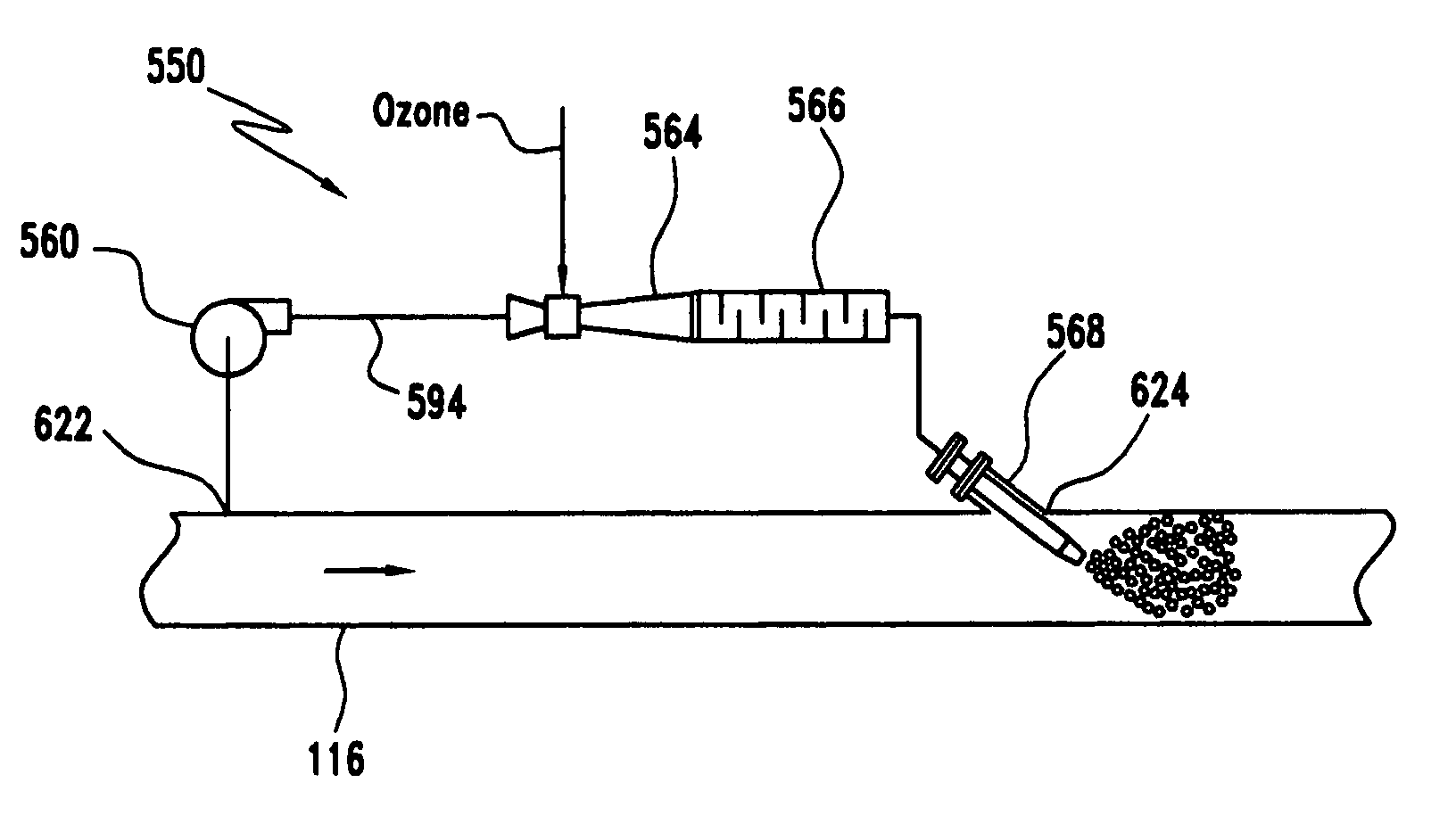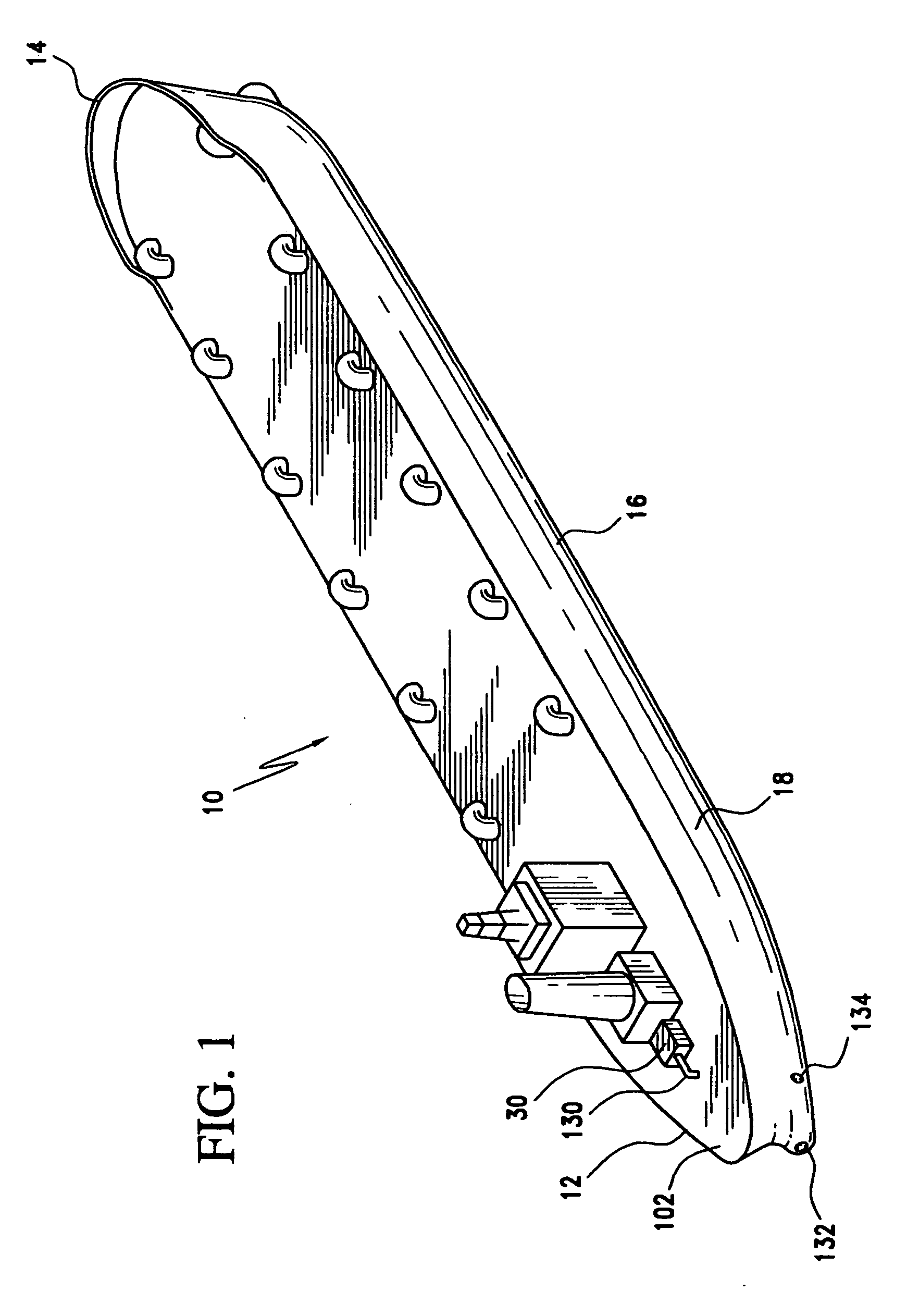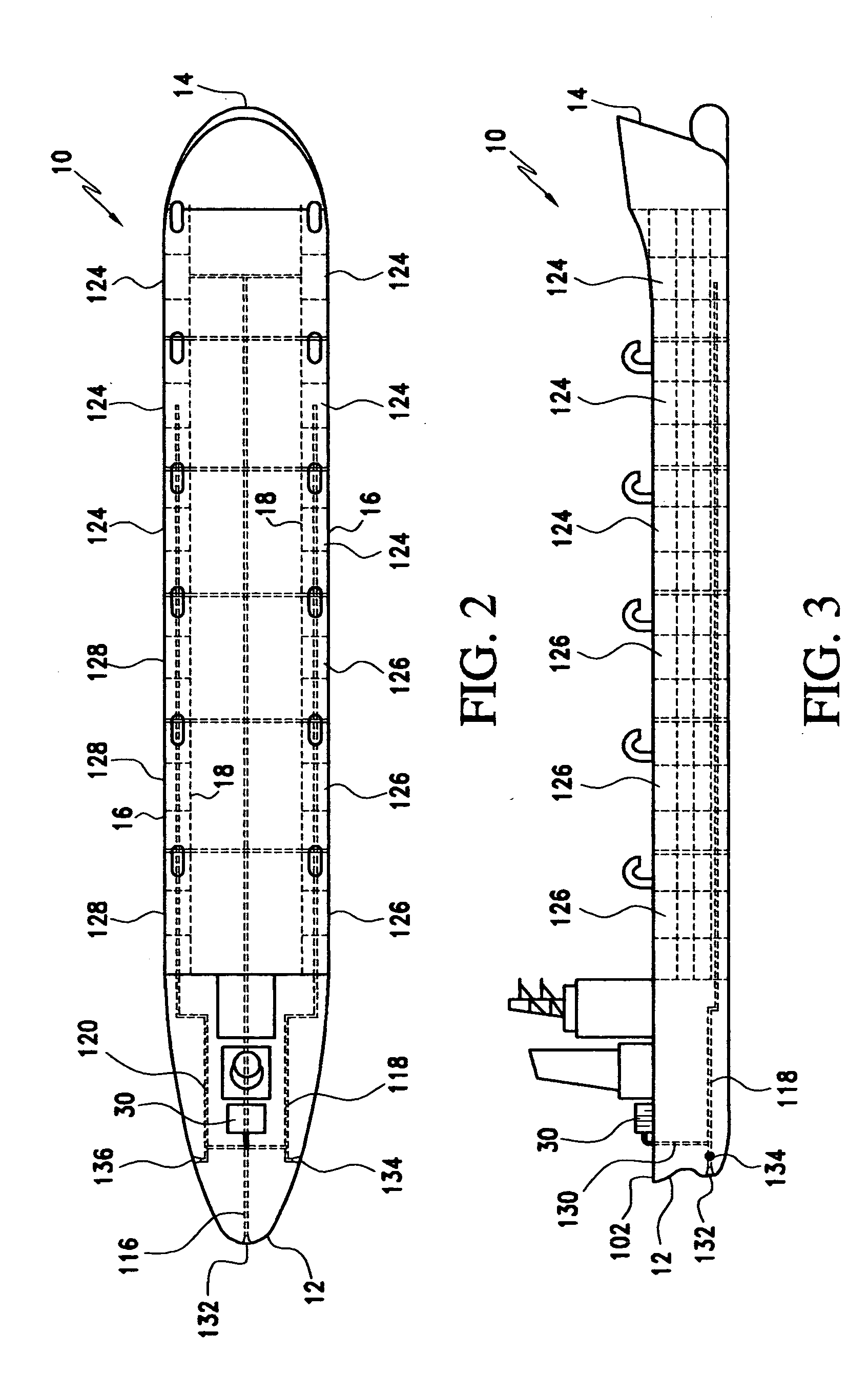Ozone retention method and system
a technology of ozone retention and ballast water, which is applied in the direction of special purpose vessels, vessel construction, and the nature of treatment water, etc., can solve the problems of unpredictable disinfectant treatment, damage to the water environment, and non-indigenous discharged species, etc., to achieve cost saving, cost effective, and effective effect of direct injection equipmen
- Summary
- Abstract
- Description
- Claims
- Application Information
AI Technical Summary
Benefits of technology
Problems solved by technology
Method used
Image
Examples
example i
[0049] In this EXAMPLE, ballast water is fed from an intake / discharge conduit between a sea chest and a battery of ballast tanks of a 100,000 to 150,000 DWT tanker. The water is fed at a 10,000 gpm flow rate. The seawater contains 70 mg / L of bromide.
[0050] A bypass stream of water is diverted from the intake / discharge conduit at a constant flow into a bypass conduit system illustrated in FIG. 5. Ozone gas is fed under slight pressure (12-15 psi) from its generating source through 316L stainless steel piping to a venturi injector. The ozone is injected as a 10-12% ozone in oxygen admixture. A bypass flow rate is set to permit effective injection by the venturi. In this EXAMPLE, a bypass flow rate is set at 66 gpm and pressure of approximately 90 psi. This flow rate is 0.3% of the main flow for every mg / L of ozone to be dosed (2.0 mg / L in this EXAMPLE). Flow and pressure are maintained by a positive displacement pump.
[0051] The selected flow rate and pressure are confirmed as follow...
example ii
[0053] In this EXAMPLE, bypass piping length for the bypass 594 is limited and a higher than typical pumping rate is maintained to reduce retention time down to almost 0.2 seconds as follows:
[0054] A bypass flow rate of 66 gpm typically requires a 2″ pipe size. In this EXAMPLE, a smaller pipe size is selected to improve the flow velocity. Since back pressure on the venturi is also a limitation, the selected pipe size is decreased by only one size increment, i.e. to 1½″. The cross-sectional area of a 1½″ Schedule 80 pipe is 0.01227 square feet. The flow rate is (66 / (7.48×60))=0.1471 ft3 / sec, so that the velocity in the pipe is increased to 0.1471 / 0.01227=12 ft / sec.
[0055] The bypass system is designed to provide a minimum length (retention length) from venturi to main conduit reinjection point as follows. The retention length is limited to a first 15 nominal diameters length to accommodate a static mixer and an additional 30 inches to accommodate an angled reinjector. The retention ...
PUM
| Property | Measurement | Unit |
|---|---|---|
| molar ratio | aaaaa | aaaaa |
| retention time | aaaaa | aaaaa |
| retention time | aaaaa | aaaaa |
Abstract
Description
Claims
Application Information
 Login to View More
Login to View More - R&D
- Intellectual Property
- Life Sciences
- Materials
- Tech Scout
- Unparalleled Data Quality
- Higher Quality Content
- 60% Fewer Hallucinations
Browse by: Latest US Patents, China's latest patents, Technical Efficacy Thesaurus, Application Domain, Technology Topic, Popular Technical Reports.
© 2025 PatSnap. All rights reserved.Legal|Privacy policy|Modern Slavery Act Transparency Statement|Sitemap|About US| Contact US: help@patsnap.com



